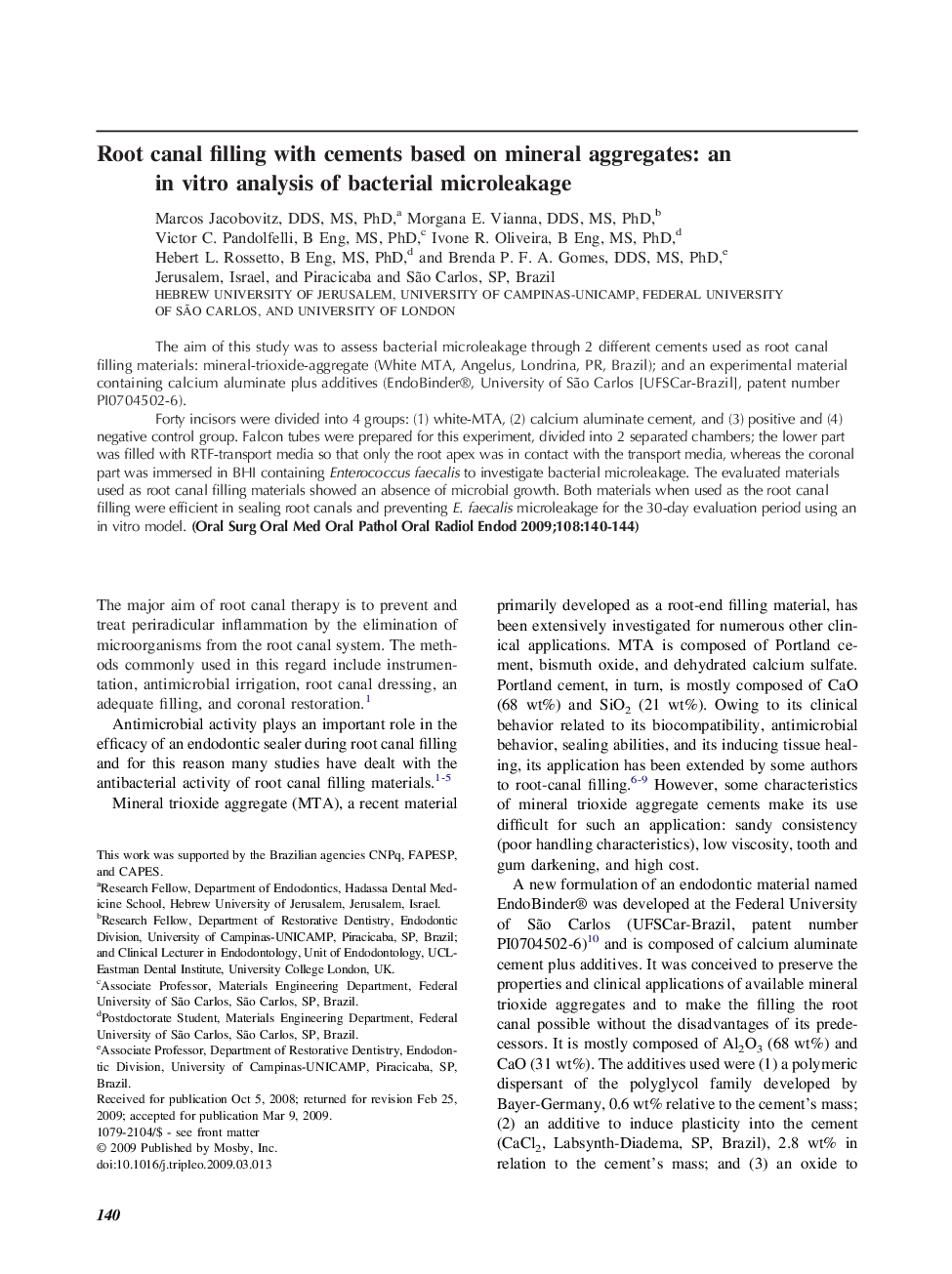| Article ID | Journal | Published Year | Pages | File Type |
|---|---|---|---|---|
| 3168200 | Oral Surgery, Oral Medicine, Oral Pathology, Oral Radiology, and Endodontology | 2009 | 5 Pages |
The aim of this study was to assess bacterial microleakage through 2 different cements used as root canal filling materials: mineral-trioxide-aggregate (White MTA, Angelus, Londrina, PR, Brazil); and an experimental material containing calcium aluminate plus additives (EndoBinder®, University of São Carlos [UFSCar-Brazil], patent number PI0704502-6).Forty incisors were divided into 4 groups: (1) white-MTA, (2) calcium aluminate cement, and (3) positive and (4) negative control group. Falcon tubes were prepared for this experiment, divided into 2 separated chambers; the lower part was filled with RTF-transport media so that only the root apex was in contact with the transport media, whereas the coronal part was immersed in BHI containing Enterococcus faecalis to investigate bacterial microleakage. The evaluated materials used as root canal filling materials showed an absence of microbial growth. Both materials when used as the root canal filling were efficient in sealing root canals and preventing E. faecalis microleakage for the 30-day evaluation period using an in vitro model.
